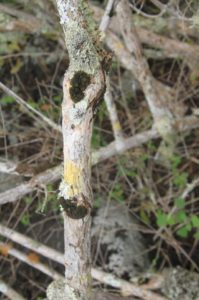 The vegetation of the Galapagos Islands was equally as mesmorizing for me as its wildlife, in some cases, perhaps even more. It’s not just that views were stunning and dramatic or that the plants were unusual, it was the wildness of the land and the strong contrasts between the plants’ vivid colors. Each island offered something entirely unique even though some of the vegetation was common on all of the islands we visited.
The vegetation of the Galapagos Islands was equally as mesmorizing for me as its wildlife, in some cases, perhaps even more. It’s not just that views were stunning and dramatic or that the plants were unusual, it was the wildness of the land and the strong contrasts between the plants’ vivid colors. Each island offered something entirely unique even though some of the vegetation was common on all of the islands we visited.
Between volcanic spoils, bristling cacti, torchwood, common carpetweed (which, despite its name is astonishingly beautiful), chala crotons, and the ever abudant Opuntia, essentially a prickly pear cactus, which in the Galapagos, has evolved into six endemic species and many varieties.
Below, left to right, you’ll see cactus and vegetation on Rabita (the Red) Island, an abandoned albatross egg, Candelabra Cactus in flower in San Cristobal Island and Cactus Finches. Third on the right is a tree branch with rich rust-red bark, known as the Common Guava Tree. You’ll see a view of Gardner Island (fourth down) next to Lava Cactus on Bartolome Island. Next, be amused by a Galapagos Penguin on Bartolome Island and be stunned by the luscious red rocks of Espanola Island. Seven down is a Poisin Apple Tree followed by the lighthouse on Espanola Island. Take a look at the Galapagos Prickly Pear (or Opuntia Cactus) on Rabita Island, and the stunning colors of common carpetweed, which can be found on many of the islands in a rich array of colors.
My favorites were too many to list but I was obsessed with the Cordia Trees – young and old — and the lichens that grew on them. The color up close was a rich saffron color, so rich that you wanted to soak in it for awhile, even without its leaves in the dead of winter. Sea purslane was also stunningly beautiful, a succulent that grows in dense mats and turns to a rust-red and orange from June to November. Mossy trees were also not uncommon and you could find Miconia and Bracken growing on San Cristobal Island.

Renee Blodgett is the founder of We Blog the World. The site combines the magic of an online culture and travel magazine with a global blog network and has contributors from every continent in the world. Having lived in 10 countries and explored nearly 80, she is an avid traveler, and a lover, observer and participant in cultural diversity.
She is also the CEO and founder of Magic Sauce Media, a new media services consultancy focused on viral marketing, social media, branding, events and PR. For over 20 years, she has helped companies from 12 countries get traction in the market. Known for her global and organic approach to product and corporate launches, Renee practices what she pitches and as an active user of social media, she helps clients navigate digital waters from around the world. Renee has been blogging for over 16 years and regularly writes on her personal blog Down the Avenue, Huffington Post, BlogHer, We Blog the World and other sites. She was ranked #12 Social Media Influencer by Forbes Magazine and is listed as a new media influencer and game changer on various sites and books on the new media revolution. In 2013, she was listed as the 6th most influential woman in social media by Forbes Magazine on a Top 20 List.
Her passion for art, storytelling and photography led to the launch of Magic Sauce Photography, which is a visual extension of her writing, the result of which has led to producing six photo books: Galapagos Islands, London, South Africa, Rome, Urbanization and Ecuador.
Renee is also the co-founder of Traveling Geeks, an initiative that brings entrepreneurs, thought leaders, bloggers, creators, curators and influencers to other countries to share and learn from peers, governments, corporations, and the general public in order to educate, share, evaluate, and promote innovative technologies.








